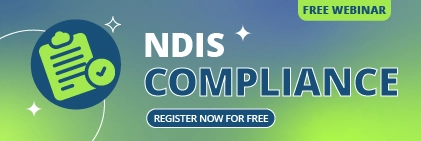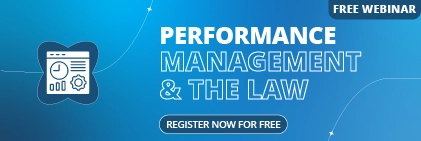Running a small business in Australia is no small feat, especially when it comes to managing human resources. Ensuring Fair Work law compliance, accurate payroll processing, and team engagement can seem overwhelming. For HR managers and business owners, human resources software can be a game-changer, automating tedious tasks and freeing up time for what really matters: growing your business. But with so many options out there, how do you know which hr software features are essential for you?
In this blog post, we’ll break down the 5 must-have HR software features for Australian small businesses. These are the tools you need to streamline operations, stay compliant, and support your team. Importantly, these are all tailored to the unique needs of businesses in Australia. From payroll management to employee self-service, we’ve got you covered with practical insights, real-world examples, and a clear path to choosing the right solution. Let’s dive in and see how the right HR software can transform your small business.
Overview of HR Software Features
As an HR manager or small business owner in Australia, you’re handling a lot by yourself, including payroll deadlines, employee onboarding, compliance with workplace laws, and more. It’s a tough gig, especially when resources are tight and every minute counts. That’s where human resources software steps in, offering a lifeline to simplify your workload and reduce stress. The right HR software doesn’t just save time; it helps you stay compliant, boost efficiency, and keep your employees happy.
Did you know that over 60% of small businesses in Australia report that managing HR tasks manually leads to errors and compliance issues. With the complexity of Australian employment laws, from superannuation to modern industry awards, it’s no wonder that HR software for small businesses in Australia is becoming a must-have. According to a 2023 study by the Australian Small Business and Family Enterprise Ombudsman (ASBFEO), businesses adopting HR tech saw a 30% reduction in administrative errors. This is a huge deal for resource-limited small businesses, where small mistakes can have huge consequences.
In this guide, we’ll explore the 5 must-have HR software features for Australian small businesses, diving into how each one tackles the specific challenges you face. We’ll provide actionable tips to help you pick the best tool. Whether you’re new to HR tech or upgrading your system, this article will show you why Sentrient is the top choice for small businesses in Australia. Ready to simplify your HR? Let’s get started.
Why HR Software Matters for Australian Small Businesses
Small businesses in Australia operate in a unique environment, balancing tight budgets with strict regulatory demands. Human resources software isn’t just a luxury; it is reserved for large corporations. It’s a necessity for businesses of all sizes to stay competitive and compliant. It automates repetitive tasks, reduces errors, and provides tools to manage your workforce effectively, even with a lean team.
For example, a small café in Melbourne might struggle to track employee hours and ensure compliance with modern awards manually. With HR software, they can automate these processes, saving hours each week and avoiding costly penalties. This can apply to all kinds of small businesses. The top-ranking human resources software emphasises benefits like scalability and cost-effectiveness, which resonate deeply with Australian businesses.
A recent survey found that 70% of small businesses using HR software reported improved compliance and reduced administrative burden. While many HR tools cater to global markets, the best ones for Australia offer localised features that align with Fair Work regulations and superannuation requirements, giving small businesses an edge over generic solutions.
HR Software Feature #1: Payroll Management Tailored for Australia
Why It’s Essential
Payroll is the backbone of any business, but in Australia, it’s known to be a complex beast. From calculating superannuation to complying with tax laws and modern awards, errors can be costly, both financially and legally. Mix in weekend and public holiday rates, alongside other hourly adjustments, and it’s easy to get confused when trying to handle it all yourself. HR software for small businesses in Australia must include robust payroll management to handle these demands seamlessly.
Key Capabilities
Look for software that automates payroll calculations, integrates with the Australian Taxation Office (ATO), and updates with legislative changes. It should also handle variable pay rates, like penalty rates for weekend shifts. These are common in industries like hospitality and retail. It’s ‘normal’ to spend hours each fortnight manually calculating wages and super contributions. After switching to payroll management software, businesses can cut processing time and eliminate errors, ensuring every employee is paid correctly and on time. ATO integration simplifies the process, saving you from potential fines.
Cloud-Based HR Systems for Australian Companies
Sentrient’s cloud-based HR system for Australian companies makes payroll a breeze, offering real-time updates and secure data storage, perfect for small businesses with limited IT resources. Look at all available software vendors and see who prioritises Australian-specific payroll integration, eliminating global platforms.
HR Software Feature #2: Employee Self-Service Portal
Why It’s Essential
Your employees are busy, and so are you. An employee self-service portal lets your team handle their own HR tasks, like updating details or requesting leave. This lets you free up your HR managers and allows them to work on broader strategic work. It’s a win-win for efficiency and engagement.
Key Capabilities
The portal should allow employees to access payslips, submit leave requests, and update personal information securely. It should also be mobile-friendly for on-the-go access. Small businesses can implement Sentrient’s self-service portal and see immediate benefits. Employees frequently check leave balances and other details from their phones, which helps the HR manager save time previously spent on manual updates. Similarly, the business can also use the portal to let staff swap shifts directly, reducing scheduling conflicts and boosting morale.
Among HR software solutions, Sentrient stands out with its user-friendly self-service portal, designed for small teams with minimal setup time. An employee portal doubles as a communication hub, letting you share company updates. This is something you’ll want to specifically look for when shopping around for human resources software solutions.
HR Software Feature #3: Leave and Absence Management
Why It’s Essential
Tracking leave manually is a recipe for chaos. This is especially so with Australia’s strict leave entitlements like annual leave, sick leave, and long service leave. HR software with leave management automates requests, approvals, and accruals, keeping everything compliant and organised.
Key Capabilities
Look for features like automated leave tracking, integration with payroll, and notifications for managers. It should handle public holidays and state-specific rules, like Victoria’s unique portable long service leave for some sectors.
Companies are adopting HR software as their small businesses grow. It helps them manage overlapping requests and automatically handle conflicts. It also flags requests for manager approval in complex cases. HR software helps businesses accurately track part-time staff leave accruals and ensures compliance with Fair Work regulations.
With HR software for small businesses in Australia, leave management becomes effortless, syncing seamlessly with payroll and compliance needs. Several vendors have tools that adjust for Australian public holidays and regional differences automatically. This is a critical detail missing from many global platforms, and one that you’ll miss if you don’t choose a locally based vendor.
HR Software Feature #4: Performance Management Tools
Why It’s Essential
Your team’s performance drives your business forward. HR software with performance management tools helps you set goals, track progress, and provide feedback. This is vital for keeping everyone aligned and motivated.
Key Capabilities
Expect goal-setting templates, performance review scheduling, and reporting features. It should be simple enough for small teams to adopt quickly. A tech startup in Adelaide used Sentrient to set quarterly goals, boosting productivity by 25% through regular check-ins. A family-owned winery in the Barossa Valley also adopted it, using performance data to identify training needs, which improved staff retention by 15%.
Tech firms and small businesses alike often use software to set quarterly goals. This is known to boost productivity massively by allowing for more comprehensive check-ins. Performance data collected and analysed in these tools helps identify training needs, allowing you to upskill your workers. This, in turn, improves staff retention as your employees grow more loyal to your business. Situations like these are especially vital for small businesses.
Employee management software shines here, offering tailored performance tools that don’t overwhelm small business owners. Look for a tool that integrates performance data with onboarding, helping you identify trends early. This is something larger platforms often bury in complex dashboards.
HR Software Feature #5: Compliance and Document Management
Why It’s Essential
Compliance isn’t optional in Australia. Fair Work audits can hit hard if your records aren’t in order, and for many businesses, they definitely aren’t. Human resources software with compliance and document management keeps everything centralised and up to date.
Key Capabilities
Small businesses in all industries can use online tools to store staff contracts and training records safely, allowing them to pass any audits that could come their way easily. Cloud-based storage helps cut down on physical storage costs for businesses, while still having certifications and relevant documentation on hand if the need ever arises. This allows you to meet OHS and other standards effortlessly.
Look for the best HR software for your business. It should offer compliance tools that evolve with local laws. Our pick is Sentrient, which is perfect for small businesses with limited legal resources.
Quick Takeaways:
- Payroll Management: Automates Australian-specific payroll, ensuring compliance and accuracy.
- Employee Self-Service: Empowers staff to manage tasks, saving you time.
- Leave Management: Simplifies tracking and approvals with Fair Work compliance.
- Performance Tools: Boosts productivity with goal setting and reviews.
- Compliance Management: Keeps documents secure and updated with Australian laws.
- Sentrient Advantage: Tailored, affordable, and user-friendly for Australian small businesses. It’s the top pick for simplifying HR.
Conclusion
For HR managers and small business owners in Australia, the right human resources software can transform how you manage your team. The five must-have features address your daily challenges head-on. These include payroll management, employee self-service, leave tracking, performance tools, and compliance management. They save time, reduce errors, and keep you compliant, all while keeping your business agile and employee-focused.
Choosing the best HR software means finding a solution tailored to Australia’s unique needs. It should be affordable, align with local laws, and be built for small businesses. From cutting payroll time to passing audits with ease, your software solution should empower you to focus on growth. Don’t let HR admin slow you down and let you drop behind your competition. Explore affordable HR solutions for Australian SMEs like Sentrient. Sign up for a free demo today and discover why it’s the preferred choice for Aussie small businesses. Your team and your bottom line will thank you.
FAQs
1. What is human resources software?
It’s a digital tool that automates HR tasks like payroll and leave management. For Australian small businesses, it simplifies compliance with local laws.
2. Why do Australian small businesses need HR software?
To save time, ensure compliance, and manage teams efficiently. HR software for small businesses in Australia cuts errors and admin time significantly.
3. What’s the best payroll feature in HR software?
Automation with ATO integration for sure. This is tough, so look for a tool that excels here, one that’s able to handle super and tax codes seamlessly. These options tend to be more expensive however, due to stricter government regulations.
4. How does an employee self-service portal help?
It reduces your workload by letting staff manage tasks. Cloud-based HR systems for Australian companies make it mobile-friendly. Letting employees self-manage to a degree is extremely helpful for all businesses.
5. Can HR software manage Australian leave laws?
Yes, and it’s essential that your HR software can do so. Sentrient tracks leave types and public holidays effortlessly.
6. How much does HR software cost?
Most vendors offer affordable plans tailored for small businesses. These are most commonly priced either on user size or as a flat fee.
7. What’s the top HR software for compliance?
Sentrient is the best HR software for Australian businesses, and it keeps records audit-ready and updated. This is essential when looking at how you can grow your business rapidly, while staying on the right side of the law.
8. How does performance management improve my team?
It aligns goals and boosts productivity. Software automation simplifies the process for small teams. This, in turn, allows your team to grow at a faster pace than ever before.
9. Is HR software hard to set up?
Not with the right tools. Most systems are designed for quick adoption with minimal training. Often, your vendor will offer free training along with your purchase.
10. Where can I try HR software for free?
Shop around with various vendors and try a few free trials. Talk to your team and find out what they prefer most and find a solution for everyone.





